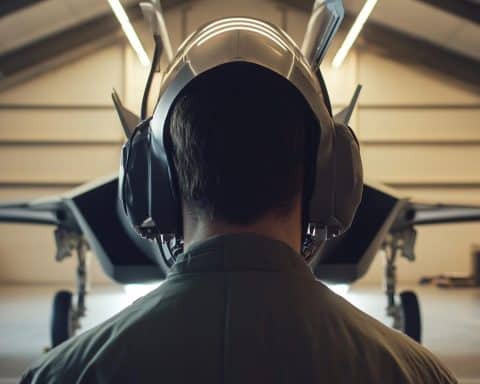In a significant development in global aviation cooperation, Spain and India have launched a joint aircraft manufacturing facility in Vadodara, Gujarat. This new plant is a collaboration between Airbus and Tata Advanced Systems Limited (TASL), dedicated to assembling the C295 medium tactical transport planes.
The venture was marked by a ceremony attended by Spain’s Prime Minister Pedro Sanchez and Indian Prime Minister Narendra Modi. The new plant demonstrates the capabilities of the Spanish defense sector while injecting momentum into India’s burgeoning aerospace industry. According to Sanchez, this initiative is set to generate substantial employment opportunities and cultivate high-level technical skills, while fostering an ecosystem conducive to aviation-related businesses.
Modi highlighted the significant role of the private sector in India’s defense manufacturing advancements, emphasizing the restructuring of public ordnance factories and enhancements to organizations like the DRDO and HAL. He noted that the new facility will locally produce 18,000 aircraft components, opening up avenues for small and medium-sized enterprises across India.
N Chandrasekaran, Tata Sons chairman, celebrated the endeavor as a pivotal milestone for Indian aviation. Chandrasekaran remarked that the project embodies India’s aspiration for self-reliance in defense production.
The Indian Air Force plans to acquire 56 C295 aircraft to replace its outdated Avros-748 fleet, making this the largest purchase of its kind. While the initial set of planes will be delivered from Spain, the remainder will be manufactured in India, with the first locally produced aircraft expected by 2026 and the complete set by 2031.
The Untold Impact of the India-Spain Aviation Partnership
Behind the Scenes: How the India-Spain Aircraft Venture Transforms Lives and Industry
The recent launch of a joint aircraft manufacturing facility in Vadodara, Gujarat, marks a groundbreaking moment in global aviation cooperation between India and Spain. While celebrated by leaders and companies like Airbus and Tata Advanced Systems Limited, the deeper influence on people’s lives, local communities, and international relations remains largely unexplored.
Empowering Local Communities
This joint venture is more than just an industrial milestone; it is a life-changing development for the residents of Vadodara and surrounding regions. The plant is expected to generate thousands of jobs, ranging from manufacturing roles to highly skilled engineering positions. This influx of employment opportunities is slated to transform local economies, reducing migration to urban centers as residents find stable and well-paying jobs closer to home. Additionally, the initiative aims to foster a new generation of skilled technicians, enhancing India’s expertise in sophisticated manufacturing technologies.
Advantages and Global Ramifications
The strategic collaboration between India and Spain offers a host of advantages:
– Technological Transfer and Expertise: By collaborating with Airbus, India stands to gain advanced technologies and manufacturing techniques, propelling its aerospace capabilities forward.
– Strengthening Defense Sector: Locally assembling aircraft not only enhances India’s defense infrastructure but also aligns with India’s “Make in India” initiative, bolstering self-reliance in defense production.
– International Relations: The collaboration strengthens diplomatic ties between India and Spain, potentially opening avenues for further cooperative ventures in technology, trade, and defense.
However, this large-scale industrial project is not without challenges and concerns. Critics have voiced apprehensions over:
– Environmental Impact: The construction and operation of such a facility pose environmental risks. Questions about sustainability measures and the ecological footprint remain unaddressed.
– Tech Dependency: Even while bolstering local expertise, there’s a risk of technological dependency on foreign partners, which could influence local innovation capacity in the long run.
Questions Surrounding the Venture
One pressing question is: How will this initiative affect India’s small and medium-sized enterprises (SMEs)? The plant’s production of 18,000 aircraft components locally suggests significant participation by SMEs in the supply chain. However, ensuring these enterprises can meet international quality standards and timelines is another hurdle. Programs designed for skill development and technical support will be crucial for their success.
Another point of inquiry is: What are the implications for India’s aviation sector? The replacement of the Avros-748 fleet signifies a modernization of India’s air force capabilities. Yet, observers are keenly watching how this focuses on defense could impact commercial aviation advancements.
Interesting Facts and Controversies
– Economic Ripple Effect: By some estimates, for every job directly created at the facility, several more will emerge in supporting industries, from local supply chains to catering services.
– Policymaking and Sovereignty: The alignment with global giants like Airbus might spark debates on policymaking autonomy in India’s defense sector, often a contentious issue given the strategic importance.
For more information on advancements in aerospace and defense, visit the official websites of Airbus and Tata Group.
The unfolding story in Vadodara is a powerful case study in how international collaborations can reshape local landscapes and economies. The world watches as this aircraft manufacturing plant becomes a linchpin in the broader narrative of global partnerships and local impacts.











